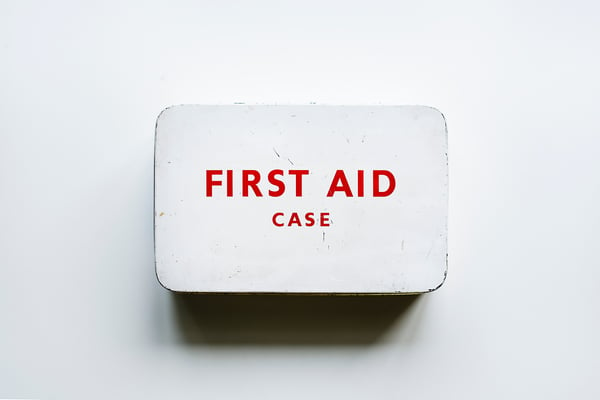After one of the worst hurricane seasons on record, it seems more pressing than ever to discuss how we respond to natural disasters. How can we improve our response from a healthcare and emergency response perspective? Specifically, how can telehealth platforms be utilized in the wake of natural disasters to help individuals and entire communities remain healthy?
Telehealth and Hospital Operations During Disasters
When one considers the applications of telehealth, they often think of the impact it can have on the day-to-day operations within a hospital, physician practice, or home health center. However, just like we use telehealth to treat more patients, reach patients in rural areas, and more accurately monitor patient compliance, we can use telehealth to augment patient care during natural disasters.
Natural disasters not only damage peoples’ homes, they can severely disrupt entire communities as well. Clinics and hospitals are often affected by these disasters and are sometimes unable to operate and serve patients. These facilities can be closed due to power outages or tasked with treating only emergency cases, leaving many patients without proper medical care.
What does this mean for patients who recently underwent a procedure and need updated care instructions? What happens to the patients who have chronic conditions that require frequent visits with a physician? When natural disasters limit health care services, are these patients supposed to go without care?
After a blizzard buried the northeast in several feet of snow in 2014, Massachusetts General Hospital applied their new telehealth technology to bridge the inevitable gaps in care. The hospital was left without electricity and forced to close for several days. However, by using their telehealth platform, providers at Mass General managed to maintain appointments and continue treating patients. Wound imaging allowed patients recently released from surgery to receive up-to-date instructions for proper recovery and treatment. Additionally, patients with mental health issues and chronic conditions were able to keep in touch with their physicians.
As early as 2008, telehealth was able to assist healthcare providers and emergency responders in treating people who sustained minor wounds during Hurricane Ike. Wound imaging and video messaging proved incredibly effective in diagnosing and treating minor injuries, such as bites from bees, fire ants, or mosquitoes, wounds or rashes, and skin infections from contaminated floodwaters. This use of telehealth relieved smaller clinics from patient overload, thus allowing them to focus on emergency cases.
Monitoring and Treating Evacuated Patients

Telehealth technology can also provide relief when people are forced to evacuate from their homes. As natural disasters become more frequent, the number of forced evacuations will continue to increase.
In December 2017, the California wildfires that surround the Los Angeles area forced the evacuation of hundreds of thousands of people. In the most recent hurricane to hit the Florida Gulf Coast, over 500,000 people across three states were ordered to evacuate. These kinds of mass evacuations can wreak havoc on an individual’s well being. Often, people are in such a great rush to evacuate that they leave medications, medical equipment, or medical instructions behind. Other times, they simply don’t bring enough medication to sustain themselves throughout the entirety of their displacement. Telehealth can allow physicians to speak with patients and continue to monitor their chronic illnesses, as well as prescribe medication to pharmacies near their temporary relocation spots.
Mental health conditions can also be exacerbated during natural disasters and mass evacuations. Telepsychiatry has seen a large user increase in recent years and continues to grow at an impressive rate. As it grows, we should consider how it can help those who are experiencing the trauma and mental health side effects of evacuations.
The stress of leaving home, possibly being separated from loved ones, and the destruction of belongings takes a large toll on the mental health of evacuees. Hurricane Katrina, for example, resulted in the evacuation of 80 percent of the city of New Orleans before displacing evacuees for weeks to months. This event triggered many hurricane survivors to experience mental health problems, most notably depression and PTSD.
In circumstances like the aftermath of Hurricane Katrina, the ability to easily reach out to a mental health professional is invaluable. Applying telehealth to natural disasters would allow all those affected to communicate with a mental health professional to help them cope with an incredibly stressful time.
Improving Emergency Response Efforts
At the beginning of the 2018 hurricane season, The New York Times featured a story on a family affected by Hurricane Harvey. During the hurricane, emergency response in Harris County, the county surrounding Houston, received thousands of 911 calls. Due to the drastically increased volume of calls and the incredibly long wait times for callers, 911 operators were told to bypass the normal triaging system, and mark calls as either water rescue or medical. Under normal circumstances, calls are triaged and assigned according to urgency level, such as code red for a medical emergency that requires immediate attention. Ignoring this standard coding procedure affected many families across the county and left many people without proper care.
The application of telehealth has the potential to offset the high demand for help during natural disasters. Local government agencies, as well as federal agencies, can use the same telehealth tools used by physicians to develop emergency response apps to communicate with 911 operators and FEMA workers.
For example, callers can utilize video conferencing with operators, or send them pictures and videos of their wounds. This layered and comprehensive messaging would allow 911 operators to quickly and efficiently evaluate an emergency call and more accurately rank its severity.
The Future Role of Telehealth in Natural Disaster Management
People, communities, and organizations must adapt in order to address the growing health care risks posed by natural disasters. We must change how we prepare and respond so that in the face of these disasters, people can receive the best care possible for any injury or illness. As patient demand increases and technology advances, telehealth is sure to become a critical component of natural disaster management.
